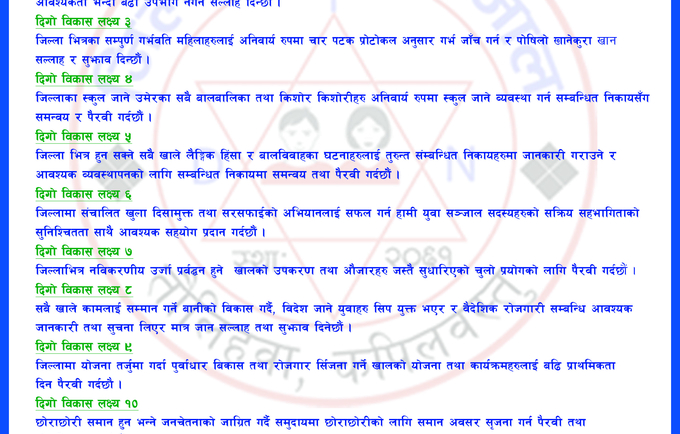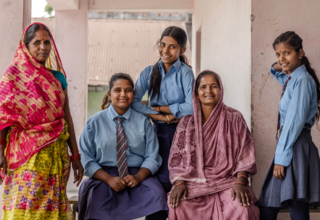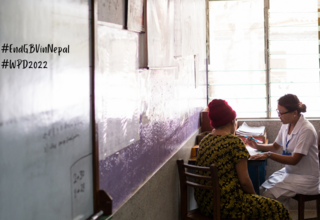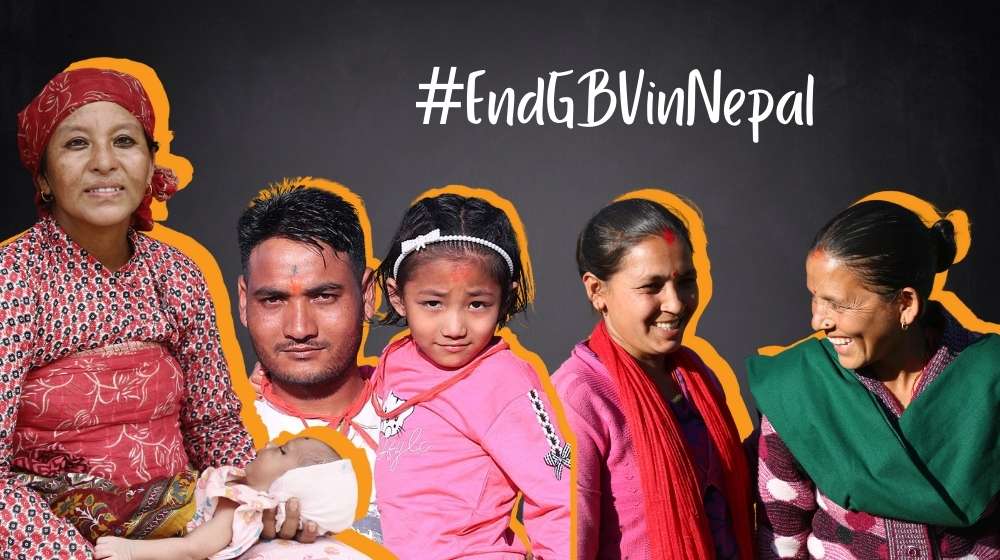Young people in Kapilvastu district are working together to better understand their role in implementing the Sustainable Development Goals (SDGs). Recently, they have “localized” the SDGs.
“The 17 Sustainable Development Goals are global. We cannot achieve them without knowing the comparative advantage of Kapilvastu and without relating those goals to the local context,” said Chairperson of District Youth Network (DYN) Dilip Kumar Yadav.
Members of the network and Adolescent Girls’ Circles have been holding discussions to proactively explore and exchange ideas on what young people can do in their communities to help achieve the SDGs and have identified 14 such goals that they feel are more relevant to their district.
The network, supported by the District Development Committee (DDC) and the United Nations Population Fund (UNFPA), has a district-level working committee of 13 members and 53 VDC level panels under its wings in the community level with around 4,200 members, all between the ages of 15-24 years. There are six and 43 girls’ circles and groups respectively in the district with a total of 860 members between 10 to 19 years of age. The Women and Children Office, DFID and UNFPA are supporting the girls’ networks.
Sheskala Pandey, chairperson of the Adolescent Girls’ Group in Bithuya VDC, said “Some of the SDGs talk about education and equality. If we are able to keep girls in school and prevent harmful practices like child marriage, it would contribute towards the achievement of the SDGs.” The group she leads has 20 members, meets weekly and discusses, among other things, what should and can be done to end violence against women.
DYN issued a 14-point declaration with the technical and financial support of the DDC and UNFPA, spelling out what roles youth can play in the district to contribute to the achievement of the SDGs. While they discussed many actions they can take individually and collectively and are committed to doing their share, through the declaration they wanted to localize the SDGs in the district and focus – to start with - on one commitment each in relation to the 14 goals they have prioritized.
“As per our commitment towards SDG 1 “No Poverty”, youth would provide necessary support to effectively implement all the programs ongoing in the district on ending poverty,” said DYN Secretary Avinash Shukla. For SDG 2 “Zero Hunger”, their action plan reads, “We would avoid throwing away food”.
Similarly, to help achieve the SDG 3 “Good Health and Well-Being”, the declaration says, “We would request all pregnant women in the district to visit health centers at least four times for antenatal check-up”.
Under SDG 4 “Quality Education”, they “would take initiatives to talk to all parents to send children and adolescents to schools”. To implement SDG 5 “Gender Equality”, they have committed to “report cases of gender-based violence and child marriage to the local administration, police and other stakeholders as well as will lobby hard for bringing the perpetrators to book”. They have also localized nine other SDGs.
(The article, originally published in The Himalayan Times on January 21, was republished here courtesy of the newspaper)




